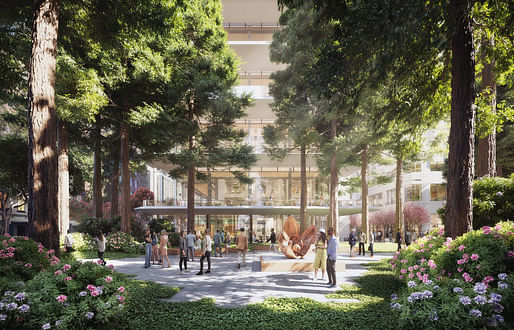

Gone are the days when the easiest way to make an architectural splash was with a shimmering and photogenic stand-alone building, fancy forms torquing this way and that. Along with exploring new takes on regional or vernacular design traditions, the field’s top talents are taking on projects that reimagine existing institutions or public spaces — or forge new links among them. — Christopher Hawthorne, The New York Times
In a new piece for The New York Times, Yale School of Architecture senior critic Christopher Hawthorne explores how architects are striving to rejuvenate downtown areas across the U.S., where hybrid work schedules and negative perceptions have led to reduced vibrancy.
While converting commercial buildings into residential spaces is a popular strategy, it's not always feasible due to structural constraints, Hawthorne argues. Architects are therefore exploring strategies to entice activity downtown by reimagining existing structures and incorporating regional aesthetics.

Throughout the New York Times piece, Hawthorne cites examples such as the Seattle Aquarium's Ocean Pavilion by LMN Architects which reconnects the city to its waterfront, the revitalized Transamerica Pyramid in San Francisco by Foster + Partners aimed at attracting tech companies, the Williams Crossing pedestrian bridge in Tulsa by Michael Van Valkenburgh and Schlaich Bergermann Partner, and the renovation of the Frick Collection in New York by Selldorf.
Hawthorne also looks internationally for inspiration such as Francis Kéré's new Goethe-Institut in Daka which uses local materials and design principles to create open, breathable spaces, and the restoration of Notre Dame Cathedral in Paris, focusing on historically accurate rebuilding.

The question of how the legacy of the COVID-19 pandemic continues to be felt in urban areas was also the subject of a recent Archinect feature. In particular, our piece explored how declining demands for office space may encourage architects to look beyond the delivery of new office buildings and further into the redesign of existing stock. The need for building owners to entice tenants back into the workplace may also lead to opportunities for architects specializing in retrofits and remodeling.
Elsewhere, firms specializing in adaptive reuse may find new opportunities in repurposing office buildings for other, more commercially viable uses such as residential and hospitality. Office conversions are not without challenges, from zoning to building codes to mechanical systems, though such challenges could also be viewed as design problems architects can position themselves as experts to overcome.
No Comments
Block this user
Are you sure you want to block this user and hide all related comments throughout the site?
Archinect
This is your first comment on Archinect. Your comment will be visible once approved.